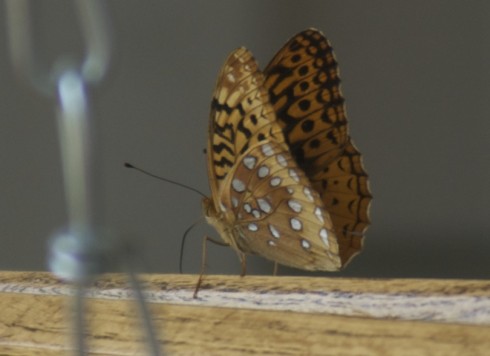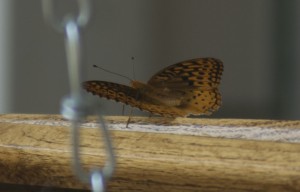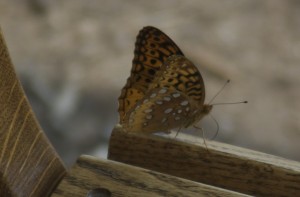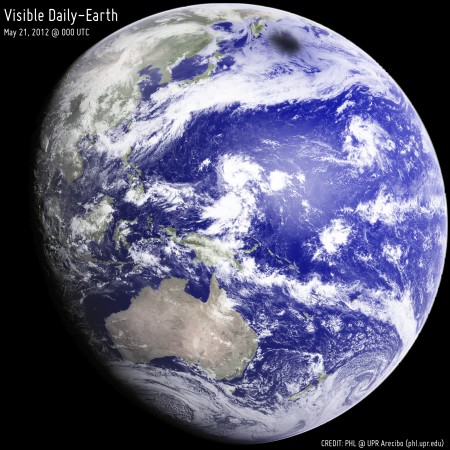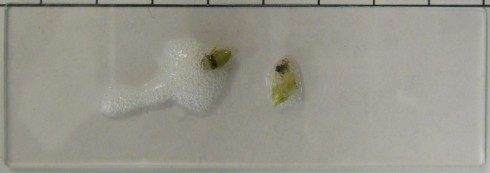
It’s pretty amazing how ecstatic seeing a simple circle with a little blobby dot can make a person feel. Following Ron Hipschman’s instructions, I installed a small aperture (~0.5 mm) solar projector at the newly established Muddle Home Solar Observatory (MHSO). The kids and I used it, and SunAeon’s app, to observe Venus transiting the Sun. It was, in a word, awesome.
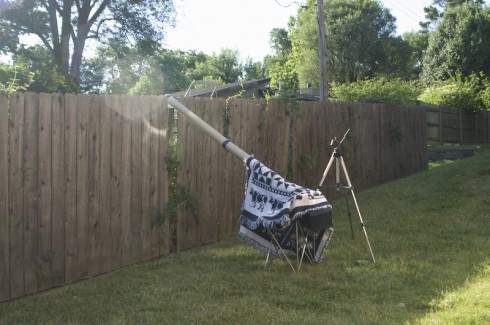
For us the transit occurred late in the day, so by the end we had trees getting in the way.
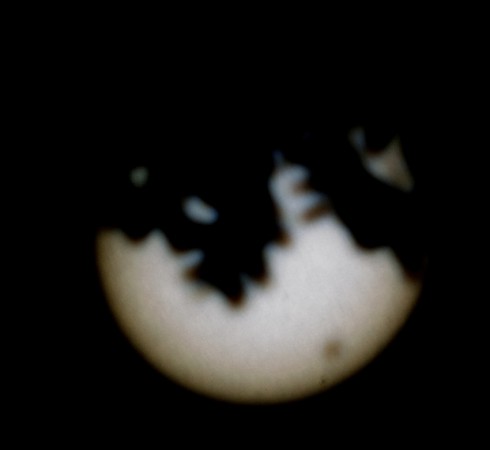
If it seems odd that the trees are at the top of the image, it’s because the images in pinhole projectors are inverted. If I flip it around the right way, the image would actually look like this.

